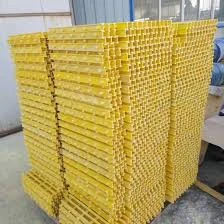
-
 Afrikaans
Afrikaans -
 Albanian
Albanian -
 Amharic
Amharic -
 Arabic
Arabic -
 Armenian
Armenian -
 Azerbaijani
Azerbaijani -
 Basque
Basque -
 Belarusian
Belarusian -
 Bengali
Bengali -
 Bosnian
Bosnian -
 Bulgarian
Bulgarian -
 Catalan
Catalan -
 Cebuano
Cebuano -
 China
China -
 China (Taiwan)
China (Taiwan) -
 Corsican
Corsican -
 Croatian
Croatian -
 Czech
Czech -
 Danish
Danish -
 Dutch
Dutch -
 English
English -
 Esperanto
Esperanto -
 Estonian
Estonian -
 Finnish
Finnish -
 French
French -
 Frisian
Frisian -
 Galician
Galician -
 Georgian
Georgian -
 German
German -
 Greek
Greek -
 Gujarati
Gujarati -
 Haitian Creole
Haitian Creole -
 hausa
hausa -
 hawaiian
hawaiian -
 Hebrew
Hebrew -
 Hindi
Hindi -
 Miao
Miao -
 Hungarian
Hungarian -
 Icelandic
Icelandic -
 igbo
igbo -
 Indonesian
Indonesian -
 irish
irish -
 Italian
Italian -
 Japanese
Japanese -
 Javanese
Javanese -
 Kannada
Kannada -
 kazakh
kazakh -
 Khmer
Khmer -
 Rwandese
Rwandese -
 Korean
Korean -
 Kurdish
Kurdish -
 Kyrgyz
Kyrgyz -
 Lao
Lao -
 Latin
Latin -
 Latvian
Latvian -
 Lithuanian
Lithuanian -
 Luxembourgish
Luxembourgish -
 Macedonian
Macedonian -
 Malgashi
Malgashi -
 Malay
Malay -
 Malayalam
Malayalam -
 Maltese
Maltese -
 Maori
Maori -
 Marathi
Marathi -
 Mongolian
Mongolian -
 Myanmar
Myanmar -
 Nepali
Nepali -
 Norwegian
Norwegian -
 Norwegian
Norwegian -
 Occitan
Occitan -
 Pashto
Pashto -
 Persian
Persian -
 Polish
Polish -
 Portuguese
Portuguese -
 Punjabi
Punjabi -
 Romanian
Romanian -
 Russian
Russian -
 Samoan
Samoan -
 Scottish Gaelic
Scottish Gaelic -
 Serbian
Serbian -
 Sesotho
Sesotho -
 Shona
Shona -
 Sindhi
Sindhi -
 Sinhala
Sinhala -
 Slovak
Slovak -
 Slovenian
Slovenian -
 Somali
Somali -
 Spanish
Spanish -
 Sundanese
Sundanese -
 Swahili
Swahili -
 Swedish
Swedish -
 Tagalog
Tagalog -
 Tajik
Tajik -
 Tamil
Tamil -
 Tatar
Tatar -
 Telugu
Telugu -
 Thai
Thai -
 Turkish
Turkish -
 Turkmen
Turkmen -
 Ukrainian
Ukrainian -
 Urdu
Urdu -
 Uighur
Uighur -
 Uzbek
Uzbek -
 Vietnamese
Vietnamese -
 Welsh
Welsh -
 Bantu
Bantu -
 Yiddish
Yiddish -
 Yoruba
Yoruba -
 Zulu
Zulu
frp ladder
Exploring the Frp Ladder A Versatile and Innovative Solution
In the contemporary world of construction and maintenance, the demand for durable, lightweight, and efficient tools has never been greater. One such innovation that has significantly shaped these industries is the Fiberglass Reinforced Plastic (FRP) ladder. Combining strength, versatility, and safety, FRP ladders have become essential equipment for various applications ranging from industrial settings to domestic use. This article delves into the features, benefits, and applications of FRP ladders, illustrating their growing importance in today’s economy.
What is an FRP Ladder?
FRP ladders are constructed using a composite material that incorporates fiberglass strands in a resin matrix. This combination results in a lightweight yet immensely strong product that can endure harsh environmental conditions. The structural integrity of FRP ladders ensures they can manage heavy loads while resisting corrosion, chemical damage, and UV degradation, making them ideal for a wide array of environments.
Key Features of FRP Ladders
1. Lightweight Design One of the most significant advantages of FRP ladders is their lightweight construction. Unlike traditional metal ladders, FRP ladders are easy to transport and set up, allowing for greater convenience, especially in applications that require frequent movement.
2. Corrosion Resistance FRP materials are naturally resistant to corrosive substances, making these ladders suitable for environments such as chemical plants, oil refineries, and wastewater treatment facilities where exposure to harsh chemicals is common.
3. Electrical Insulation FRP ladders are non-conductive, which makes them the preferred choice for electrical maintenance tasks and installations. This characteristic enhances safety, reducing the risk of electrical shock.
4. High Strength-to-Weight Ratio The incorporation of fiberglass reinforces the ladder's structure, significantly enhancing its load-bearing capabilities while keeping it lightweight. This means workers can use these ladders confidently without the burden of excessive weight.
5. Enhanced Safety Features Many FRP ladders come equipped with slip-resistant surfaces and safety features designed to reduce the risk of accidents. Their stability and resilience make them a dependable choice for various tasks.
frp ladder

Applications of FRP Ladders
FRP ladders find utility across a vast spectrum of industries. Here are some notable applications
- Construction In construction sites where materials and tools often come into contact with moisture, FRP ladders offer a safe and effective climbing solution.
- Electrical Electricians regularly prefer FRP ladders because of their non-conductive nature; they can work confidently around live wires without the fear of electrification.
- Marine In maritime environments, where ladders are exposed to saltwater and moisture, the corrosion-resistant properties of FRP extend the lifespan of the ladders significantly.
- Maintenance and Repair Industrial facilities often require regular maintenance work, and FRP ladders' versatility makes them suitable for accessing hard-to-reach areas safely.
- Agriculture Farmers and agricultural workers utilize FRP ladders for various tasks, from maintenance to harvesting, due to their lightweight and durable nature.
Conclusion
In summary, the FRP ladder represents a significant innovation in ladder technology, combining strength, safety, and versatility. Its resilience against corrosion and electrical hazards makes it indispensable in various fields, while its lightweight nature ensures ease of use without compromising safety. As industries continue to evolve and demand better tools for construction, maintenance, and various applications, FRP ladders are poised to remain at the forefront of these developments. Investing in FRP ladders not only enhances worker safety and efficiency but also contributes to a more productive and sustainable work environment. In a world where reliability and safety are paramount, the FRP ladder shines as a brilliant example of modern engineering and materials science.
Latest news
-
Exploring the Benefits of Top Hammer Drifter Rods for Enhanced Drilling PerformanceNewsJun.10,2025
-
High-Precision Fiberglass Winding Machine for GRP/FRP Pipe Production – Reliable & Efficient SolutionsNewsJun.10,2025
-
FRP Pipes & Fittings for Shipbuilding - Corrosion-Resistant & LightweightNewsJun.09,2025
-
Premium FRP Flooring Solutions Durable & Slip-ResistantNewsJun.09,2025
-
Premium Fiberglass Rectangular Tanks Durable & Lightweight SolutionNewsJun.09,2025
-
Tapered Drill String Design Guide Durable Performance & UsesNewsJun.09,2025









